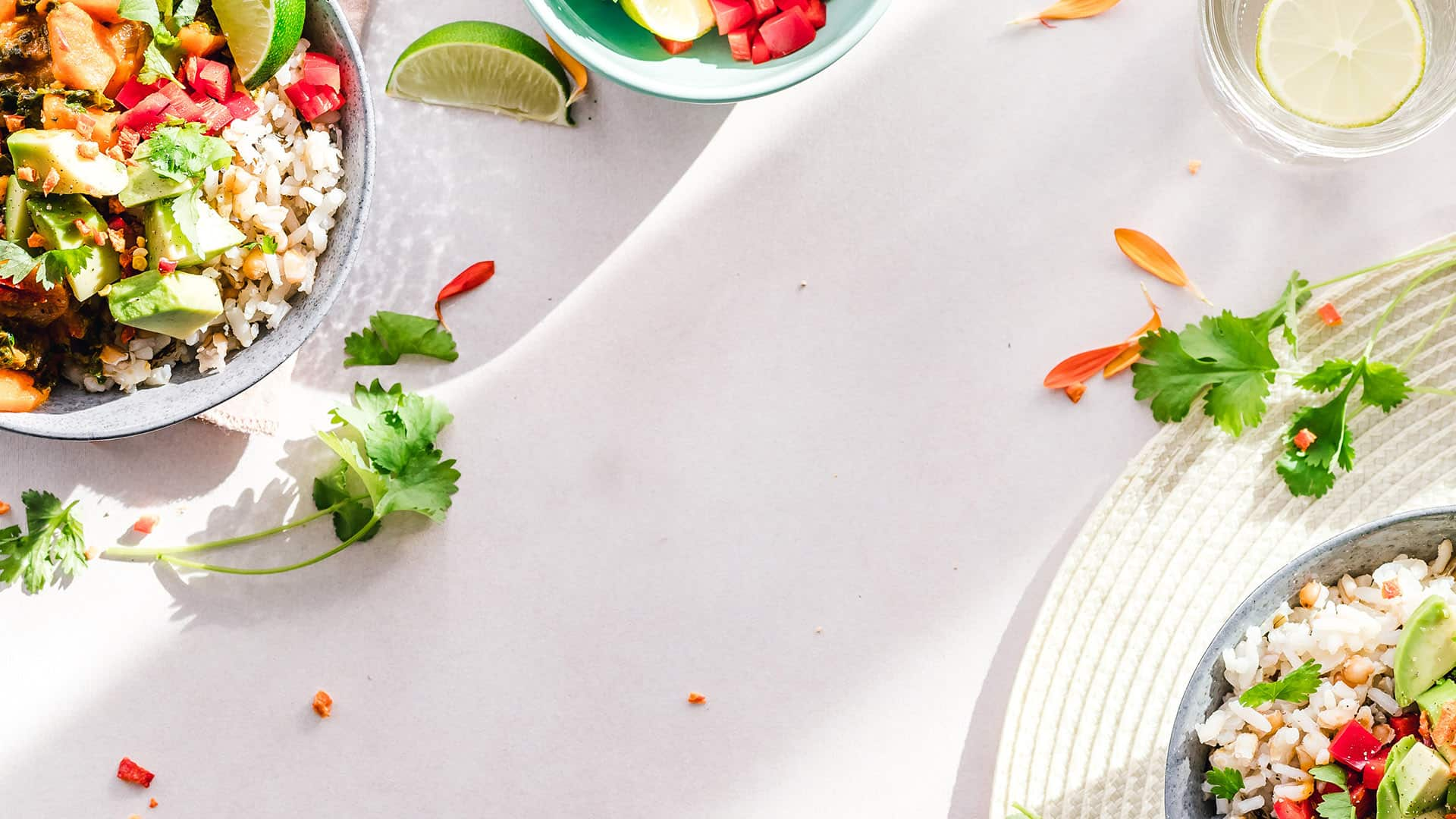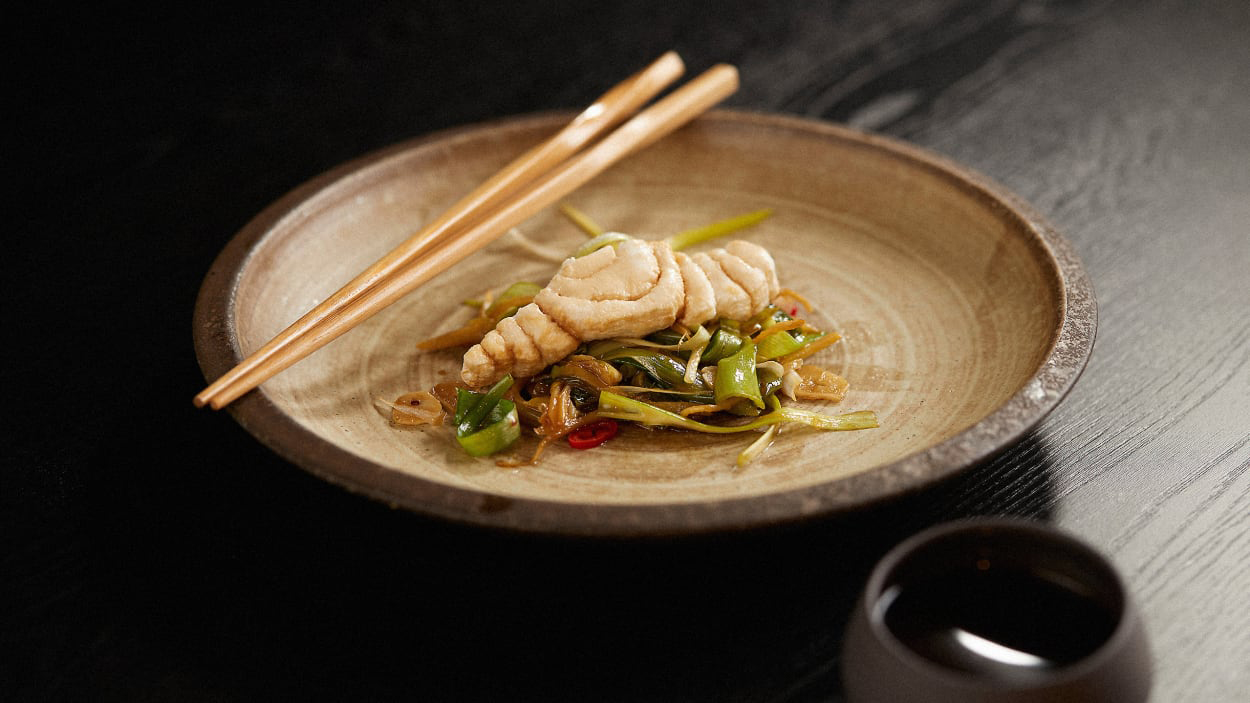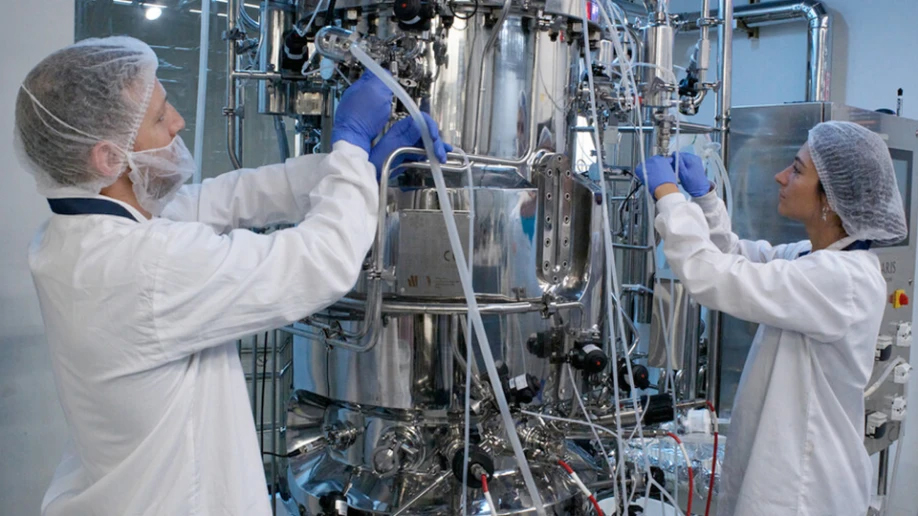

Deep Dive: Cell divides
Scaling up cultivated meat production – when the market is ready, and investment allows – will involve overcoming numerous commercial, biological and technical hurdles. Here, Frank Millard speaks with some experts who are looking to help bridge some of the gaps
Without doubt, the commercial landscape for cultivated meat is transforming. Last June, the USDA approved GOOD Meat and UPSIDE Foods to market their cell-cultivated chicken products, and they’re already being served up in restaurants in Washington and San Francisco, respectively. GOOD Meat’s chicken, of course, was previously available to select diners in Singapore, having received the green light from the SFA in 2020. And in recent weeks, Aleph Farms received the all clear from Israel’s Ministry of Health for its beef product.
What’s certain is that many other approvals will follow, and soon enough they won’t even make the news. What’s less certain is when any of these companies will turn a profit to start repaying some of the tens and hundreds of millions invested into them. The cold hard truth is that the headlines in the future will more than likely focus on the companies that bite the bullet. Both are inevitable – the closures and the overly negative press reception to those ‘failures’.
So, while the regulatory pathway now appears less daunting, attention is switching to some of the other challenges, one of which is scaling. But scaling takes technology. And that takes investment. And despite the efforts of numerous innovators in the value chain, helping to reduce the cost of certain parts of the cell-cultivation process, without scale – and hence improving the economics (i.e. reducing the end consumer price point) – cultivated meat can never be mainstream. The right markets in which to scale are also key for many of the players in this nascent industry.

Umami Bioworks is currently focusing its efforts on getting approval in Singapore, which Lim Choon Kiat, Group Leader, believes is a strategy that many pursue. In fact, he has witnessed a huge influx of companies coming to Singapore to set up their manufacturing, or even regard Singapore as their first go-to market. “The process of getting regulatory approval is very lengthy and stringent, but I think being in Singapore gives us some advantage as the guidelines here are more well defined, when compared with the USA,” he feels. “The Singapore government also has a more friendly attitude toward cultivated meat, or alternative proteins in general.”
Image and substance
A further conundrum for the sector is public perception and misinformation that has falsely labeled cultivated meat as ‘lab grown’ or ‘fake meat’. Even though cultivated beef, for example, is not (and does not) identify as a cow, it is still meat. It does not come from livestock raised on pasture, but it is the same meat in a similar form yet without the attendant risks to climate associated with CO2 generation. Eventually, Choon believes, opinions will change. A product composed of real animal cells, muscle and fat should be classified as “real meat”, he maintains.
While the industry itself believes it has established a watertight case for the early ubiquity of cultivated meat in the marketplace, achieving it poses further dilemmas. In the short term, commercially sold cultivated meat will be expensive but, similar to electric vehicles, regarded as cleaner and safer than the conventional product.
Organic produce is marketed successfully as healthier and more natural than the alternatives exposed to chemicals, antibiotics, heavy metals and other pollutants, whereas seafood has the added problem of microplastics and even radiation. Any image problem for cultivated meat is surely temporary, as its advantages and composition are sound.
Market penetration also has its own challenges as different locations have their own priorities. For example, Singapore – where a lot of food is imported hence food security is an issue – has been at the forefront of development and market acceptance. How markets in fertile rural areas, as yet generally unaffected by climate change, or the global south – much of which relies on middle-income or subsistence livestock farming – will respond is another matter. Presumably regulation and changes in agricultural use and practices will play a part going forward, to say nothing of food security and employment opportunities in arid regions.
In terms of technology, as with any new process and product, what works well in a limited environment may not work so well at scale, or sometimes not at all. Cultivated meat may save the world, or at least solve some of the problems of sustainable food production for large numbers of people, but scaling it in a way that is both technically and commercially viable is as difficult as it is essential. The real problem comes with turning a fledgling industry with technology based on clinical biopharma practices into large-scale food production able to supplement less environmentally friendly conventional animal husbandry and aquaculture.

Under reaction?
One of the numerous technical challenges for cultivated meat actually lies with the bioreactor itself. To scale from taste testing to pilot – and then onto commercial production – would entail large numbers of sizeable bioreactors plus huge facilities to have the impact necessary for disruption.
Cultivated meat research and sampling have leaned heavily on biopharma to date, but the production of cell therapies and recombinant protein production, for example, has concentrated on clinical quality rather than bulk, and so has relied on technology most suited to a smaller scale.
Although there are different types of bioreactor, biopharma has traditionally veered toward stirred-tank bioreactors for the production of animal cells. However, at scale, these risk shear stress, which is the mechanical force produced by the friction of liquid against the apical cell membrane. Shear stress has a detrimental effect on cell structure and adherence.
Dr Martina Miotto, CSO & Co-founder at CellRev, points to the benefits of continuous bioprocessing to adherent cell manufacturing. “Continuous bioprocesses are not new – a lot of industries such as oil and chemical have been moving away from batch to continuous as it does improve productivity while reducing overall costs,” she says. “Of course, an efficient cell expansion platform is one of the challenges the industry is facing. Improvements in cell line performance/stability, and media formulation, are also much needed.”
Cultivated meat production having been built on technology associated with the pharmaceutical industry presents a challenge in that the scales required for commercialization of animal cells as food is way above that required for either pharmaceutical use or pilot-scale cultivated meat production. Conventional stirred-tank bioreactors are not necessarily appropriate for cultivated meat without modification due to disadvantages that include high power consumption and high shear.
Teaching cells to swim is a big challenge right now, suggests Dr Tony Moses, Director of Product Innovation at CRB. Cells don’t survive well in the shear conditions resulting from upscaling, especially in stirred-tank reactors. “They need oxygen, they need nutrients, and you need to tightly control the temperature. Mammalian cells, in particular, are notorious for being very sensitive to all those conditions, as well as pH,” reports Moses. “So, you need really good mixing, which usually requires very turbulent conditions that tend to generate a lot of shear, which the cells don’t like; you get to a certain size where the shear starts to take over and damages the cells. That’s one of the biggest scale challenges that we’re seeing on the upstream side.”
An efficient cell expansion platform is one of the challenges the industry is facing
Choon views concern about the environment as a major driver in cultivated meat expansion though. “Compared to traditional animal farming, cultivated meat requires less land and water, the result of which is less damage to the ecosystem. The second point is about animal cruelty: millions of animals are slaughtered every year just to feed humans. We can avoid all that and still get all the nutrients we need.Cultivated meat appears as a superior option as it is similar in terms of nutritional value when compared to real meat. Lastly, there are health reasons, too. If you think about it – especially with seafood – one problem is that they tend to be heavily polluted with heavy metals, microplastics, antibiotics, and so on. This has become a huge issue recently. Being grown in a very clean and sterile environment, cultivated meat is contaminant-free and will be, in our opinion, healthier and better for the consumer.”
Practicalities
But Miotto regards the manufacturing scale up of cells as particularly problematic as it hasn’t been done before. With the industry inheriting bioreactors and vital systems from biopharma – for which a low amount of high value products is required – cultivated meat production requires high yields of a lower value product because the cells produced cannot be sold at the same price as antibodies, for example.
“We are aware of the relevance of the cost of the final product for this industry,” she admits. “On the other hand, there some big technical challenges to overcome. At CellRev, we are focusing on the upstream part of the process – aka ‘the scale-up challenge’ – with a bioprocess that is capable of manufacturing adherent cells in a continuous way.
“This allows customers to run the bioreactor for months instead of days (as a typical batch), hence increasing yield and product quality while reducing CapEx and OpEx costs,” Miotto continues. “Moreover, waste will be reduced as well (such as plastics), impacting even further the benefits of the cultivated meat industry on the environment.”
A major chunk of the cost associated with the cell culture media is recombinant so we figured out a way to reduce them in a significant way to cut that cost
Shubhankar Takle, Co-founder & CTO at Mumbai, India-based MyoWorks – where there are already four or five cultivated meat startup companies working in the domain – believes recycling is an important factor to consider when it comes to production. “We have to figure out ways to re-use some part of the media,” he states. “I believe continuous manufacturing is really cool. A major chunk of the cost associated with the cell culture media is recombinant, so we figured out a way to reduce it in a significant way to cut that cost. Another lever would be to use input or scaffolding materials that can add bulk to the end product.”

Moses regards throughput as something the industry needs to tackle. “Let’s imagine you have 2% productivity out of your bioreactors, if you can double that, you get double the product for the same amount of capital. So, the further we can push the throughput and productivity, the better. One thing we advise our clients is to make sure that their equipment is food grade, and not pharmaceutical grade. It’s still hygienic and cleanable, but it doesn’t require some
of the ultra-stringent finishes and the controls.”
Moses suggests a great cost-saver is co-locating with the raw material, which offers savings if it can be piped directly from a large agricultural producer. “But oftentimes, that’s located on a campus,” says Moses. “So, you can buy steam, you can send your wastewater to a central treatment facility, sometimes even power could be an option. It’s a bit like outsourcing the capital cost of your utilities, and paying for those as you go.”
Moses would also like to see the industry moving toward more off-the-shelf bioreactor designs, rather than custom made, to minimize costs.
“That standard design would then allow some innovation and to bring those costs down, just making incremental improvements on that,” he continues. “We would love to see more of an off-the-shelf model. That’s done in a lot of the food and beverage industry, rather than stick-built bioreactors every time, which is very design intensive. It slows the market down and creates another set of challenges for operating companies. Another set of complexities. And another set of conditions that they have to test in the lab.”
Choon also points out that custom designs also end up being error prone. “You need to validate as you go along, which ultimately adds to the cost.”
Size isn’t everything
In different regions, there are different priorities and some have better existing food security than others. Singapore, for example, is optimizing food production in limited space by adopting a 30 by 30 model, which means providing 30% of its nutritional requirements by 2030 to ensure its food security. Perhaps this would be a better and more sustainable route to market than going for massive upscaling?
Although Choon believes the biggest benefit with larger-scale bioreactors revolves around reducing the cost, he says that while it is important to bring down costs, overall, using a large-scale bioreactor compared with multiple smaller ones also comes with its own risks. One example is that the loss incurred by a failed batch could be huge and might be detrimental to a company.
Food culture is another issue. “A person from one region might prefer a different type of fish to someone from elsewhere, for example, so I think if you can have a model that can cater for localized supply, that might be more ideal in such situations,” Choon suggests.

On a similar theme, Moses believes there may be advantages in looking at other industries for inspiration. “I think a good example is vertical farms that are popping up where there’s an advantage of growing lettuce – maybe closer to urban areas – rather than in some of those warmer climates and shipping them long distances. It’ll be interesting to watch and see which vertical farming companies find success, how they find success, and maybe take some of those lessons into the cultivated meat industry.”
Ultimately, the companies with the biggest infrastructure are best able to supply cultivated meat. But Miotto thinks having local cultivated meat companies engaging with farmers is “beautiful” and believes that will happen, just not yet. “The farmers will have to have a system that they are able to operate without being a scientist or engineer,” she predicts. “So, I think that will happen, eventually, but not before bigger companies are making the product at scale.”
Cost of land is a challenge, too, as is the availability of the talent pool, from which biotech talent is needed for the upstream and food talent for the downstream, continues Takle. “That talent tends to be clustered towards large urban areas like Singapore, where land is expensive and food manufacturing tends to be closer to food supply, which is more in the rural areas.”
Choon sees rental costs versus utility as a factor. Singapore is actually not the ideal country to build a manufacturing plant just because property prices are high, and although there are talent pools there, they don’t come cheap either.
The way forward
Overall, Miotto believes much more can be achieved by working together. “B2B businesses providing support to this industry with enabling technologies will be key to success.”
The future – while uncertain given global vulnerabilities and manufacturing challenges – can be navigated safely with clear, incisive planning that takes into account upstream and downstream factors to ensure an integrated environment.
Clearly, the industry is moving forward, and this is exciting, but the sector is still at an early stage. Consequently, we must get all of our ducks in a row to ensure success. Hence, scaling up is a challenge that needs to be solved now rather than when the bulk orders start rolling in.
If you have any questions or would like to get in touch with us, please email info@futureofproteinproduction.com







